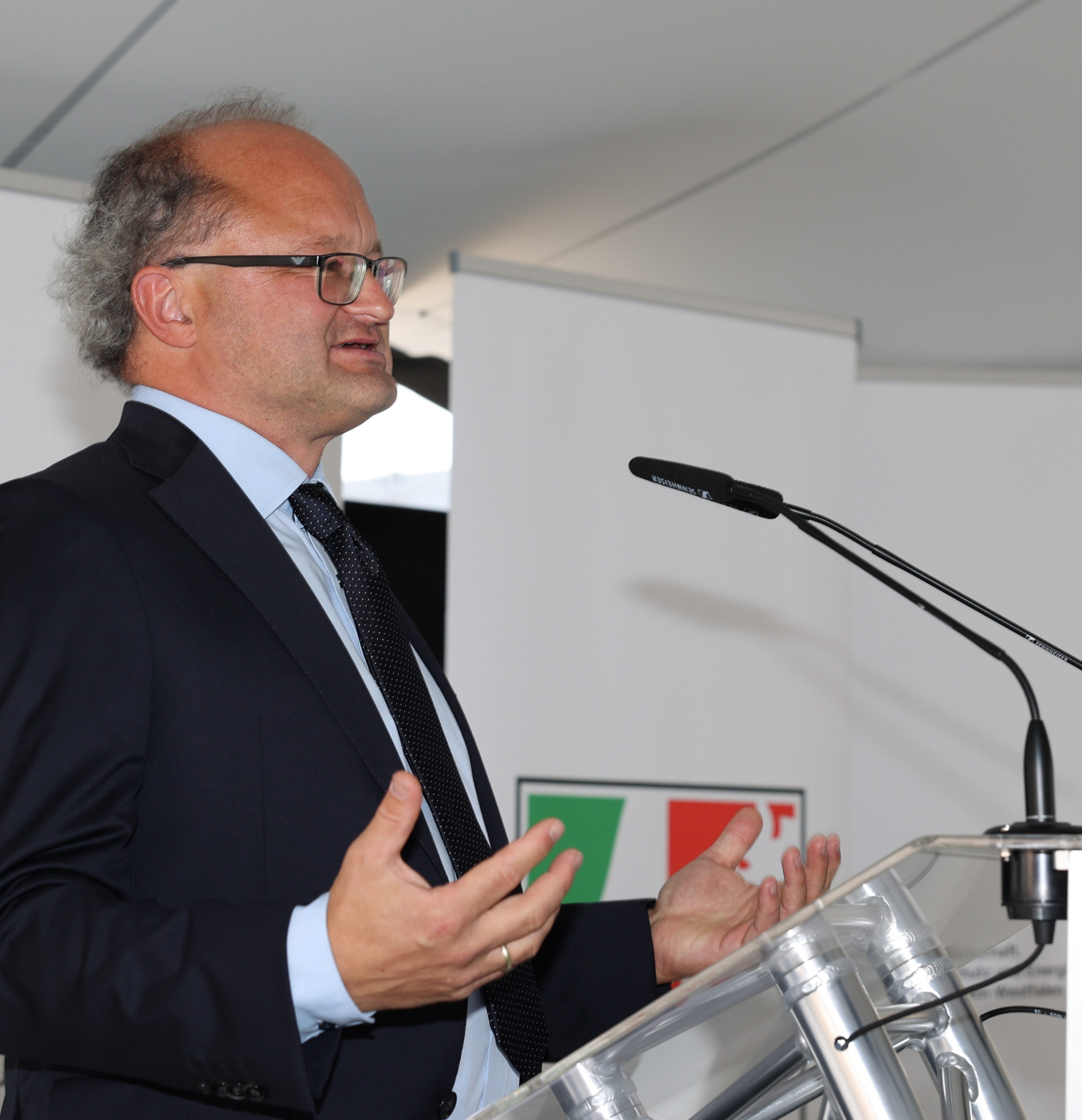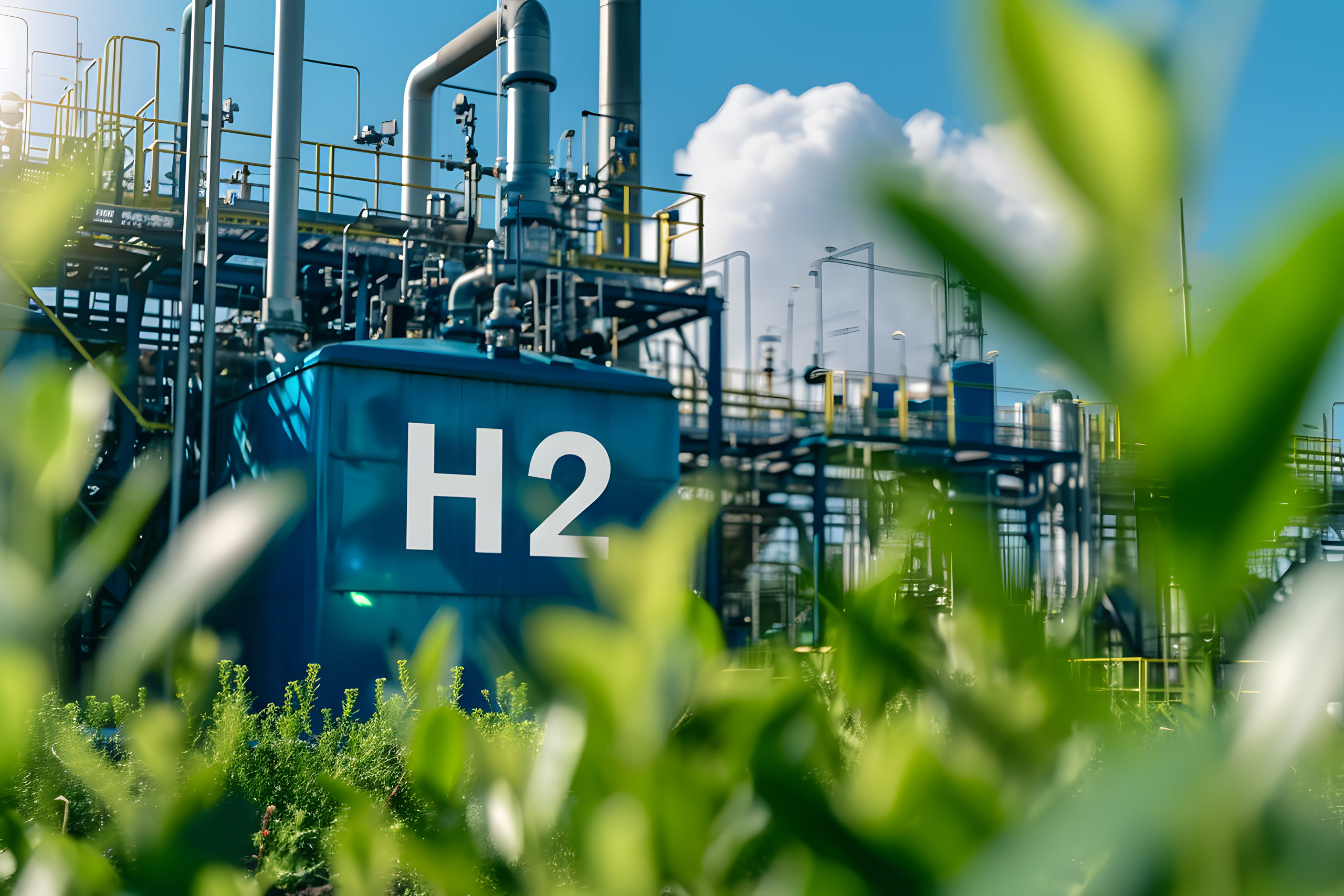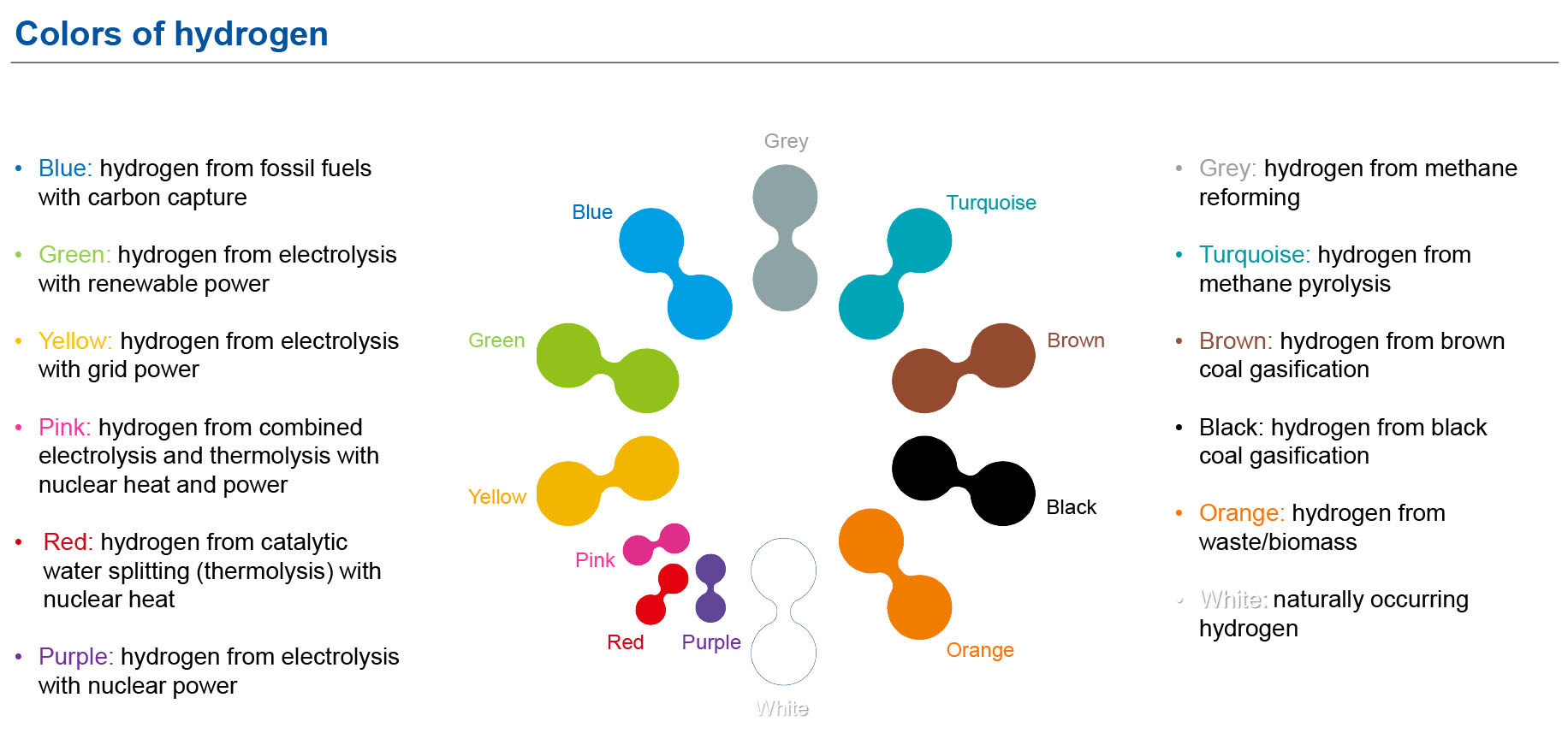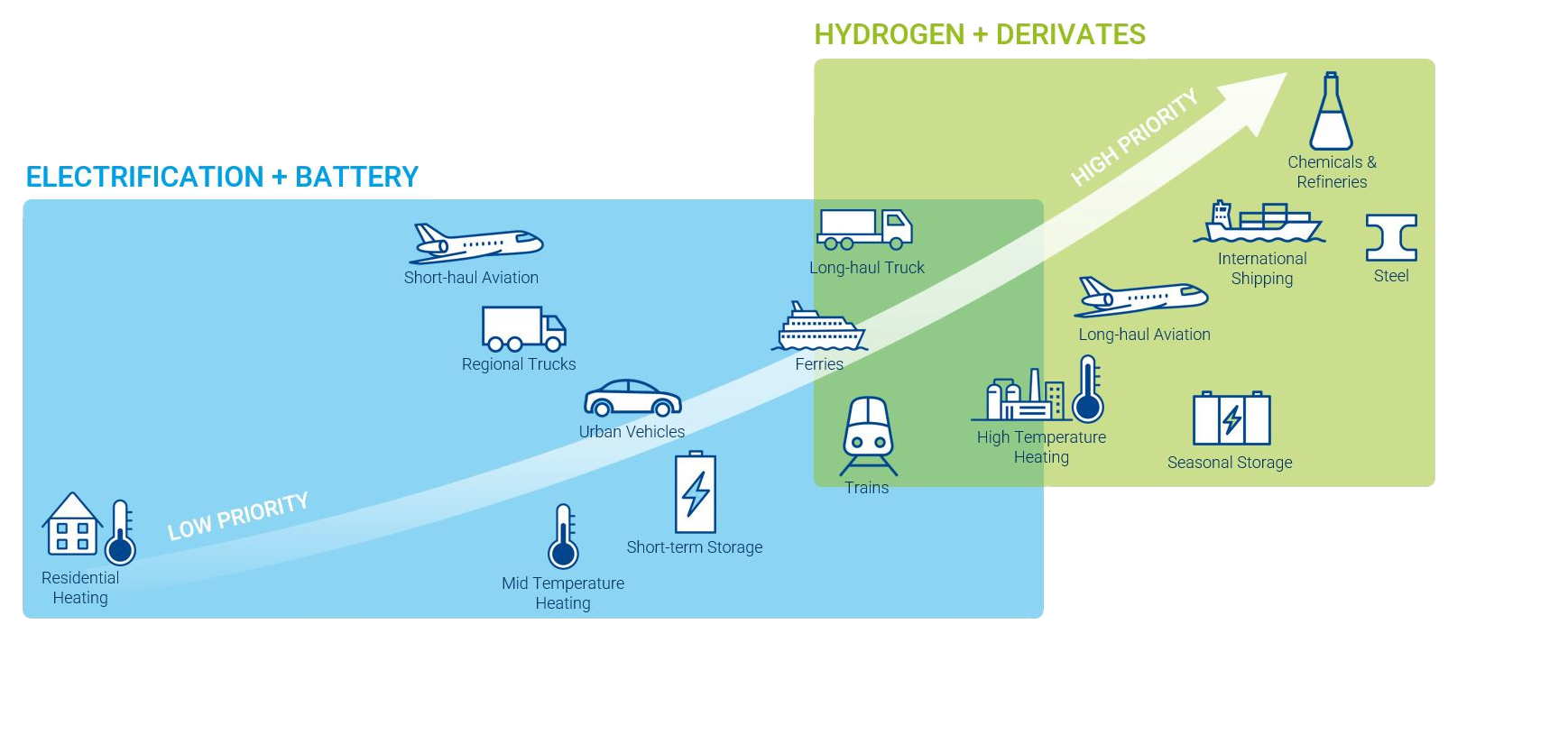Hydrogen is not champagne
Hydrogen has been many things in the public debate: blue, turquoise, green, white, expensive champagne, overrated hype or a Swiss army knife. Peter Wasserscheid, Professor of Chemical Reaction Engineering and spokesperson for the Helmholtz Hydrogen Cluster (HC-H2), establishes a different perspective in an interview: Even if green hydrogen is still comparatively expensive today, this does not contradict the fundamental importance of the molecule for the energy system of the future.
What do you think hydrogen is – an overrated hype or a technology with solutions for almost everything?
Peter Wasserscheid: Hydrogen is not really hype anywhere. We have a major problem with climate change and a huge task to solve on a global scale with the energy transition. This can lead to people who are not involved in technology development on a daily basis harbouring the hope that a single innovation could solve all the problems. In reality, however, it is the task of science to find out for which application and under which boundary conditions a particular technology can and cannot be used. Alongside electricity grids and battery storage, hydrogen will establish itself as one of the main pillars without which the energy system of the future cannot function in a stable and cost-effective manner. We need all of these pillars; they complement each other in a meaningful way.

White hydrogen
Last year, large quantities of naturally occurring hydrogen, known as white hydrogen, were found in Lorraine, France. Is this an occasion to pop the champagne corks??
Peter Wasserscheid: With any hydrogen technology, it makes sense to examine how it can be integrated into a sustainable energy system. White hydrogen does not have to be produced from renewable electricity at additional cost; like natural gas, it comes from a geological source. However, unlike natural gas combustion, it does not produce carbon dioxide (CO2) when used to generate energy. This is a major advantage. For a long time, it was believed that there were no natural hydrogen deposits on a relevant scale. Now some sources have been found and it is becoming increasingly clear where to look for them. It is therefore likely that further sources will be found in the coming years. If the quantities of hydrogen are large enough and the accessibility of the deposits is reasonably feasible, this could be an impetus that will drive forward the transformation of our energy system. But as I mentioned earlier, there is no single solution to all problems, even if we were to quickly find large usable quantities of white hydrogen quickly
The colours of hydrogen
In which areas should we start using hydrogen on a large scale? Who will be the first to be served, who will have to wait?
Peter Wasserscheid: In my view, the idea that hydrogen will initially be as expensive and scarce as champagne and therefore has to be allocated is not really convincing. It is becoming increasingly foreseeable that a larger supply of hydrogen and hydrogen carriers will be available at competitive prices around 2030, either via imports or from domestic electrolysers that are currently being planned or are already being built. So we are already in the process of building up significantly greater hydrogen availability. You could compare the transformation process to building a house. As long as the house is under construction, there is no living space and it is scarce. But when the house is finished, there is suddenly available living space and this development is already foreseeable during the construction of the house. Who is allowed to move in after completion depends on the price at which the living space is offered and who is prepared to pay this price. It will be the same with the availability of hydrogen. If there are significant quantities of hydrogen on the market, the buyer’s bid will decide who gets the hydrogen.
champagne – yes or no?
But that doesn’t contradict the statement that hydrogen is the champagne of the energy transition, does it?
Peter Wasserscheid: There are colleagues who say that hydrogen is the champagne of the energy transition. This comparison suggests that hydrogen will remain expensive in the long term and should therefore only be used where there is no other sustainable solution at all. I do not share this view. Of course, prices are higher when a technology is being ramped up than when it is fully developed later on. But even in the ramp-up phase, economic advantages can be achieved in special applications if, for example, specific customers attach importance to playing a pioneering role and are therefore prepared to dig deeper into their pockets for a climate-friendly product. These customers ensure that the market is booming and prices will fall in future.
Our task now is to ensure that the market price for hydrogen falls as quickly as possible and becomes interesting for many areas of application and customers through development, international partnerships and the consistent expansion of a renewable energy system. Once our production and storage capacities have increased and we import more hydrogen, the supposed champagne will increasingly become the mineral water of the energy transition.
Where does hydrogen make sense?
You mentioned imports. There are voices within the scientific community that hardly ever talk about the topic of future energy imports. Instead, they criticise the fact that renewable energies need to be expanded much faster in Germany.
Peter Wasserscheid:I think the idea that we should move towards energy self-sufficiency with e-renewable energy generation is fundamentally wrong. It doesn’t work if we want to become self-sufficient on the energy side and remain world export champions on the other. We have to give money to someone so that people in our partner countries can and want to buy German machines and cars. And why should we refrain from buying cheaper renewable energy in the form of storable hydrogen or hydrogen derivatives in other countries to supplement and stabilise our highly fluctuating renewable electricity generation?
The import strategy for hydrogen adopted by the Federal Cabinet in July addresses precisely this issue. Germany is thus positioning itself as a reliable business partner in trade with countries that can produce green hydrogen more cheaply. The import strategy also sends a signal that the domestic economy, which will urgently need hydrogen in the future, can also count on corresponding quantities from imports and domestic production.
The house of energy transition
Doesn’t it still make sense to further expand renewable energies in Germany?
Peter Wasserscheid: Further expansion makes sense, but it alone will not lead to a stable system. We already have days when we have more renewable energy available than our system can absorb. Then we switch off our wind turbines, even though there is a lot of wind. In contrast, the supply from solar energy drops drastically in winter. If the energy transition is a house, then renewable generation is the foundation. It is quite clear that we cannot build a house without a foundation. But it is also clear that no house can be built just because I keep making the foundations bigger. You have to build a house on the foundations. In the case of the energy system, we need storage, converters, reserve capacities and transport options in order to build a stable house for the energy transition. And this is where hydrogen plays a decisive role.

Prof. Dr Peter Wasserscheid, spokesperson for HC-H2 and founding director of the Institute for Sustainable Hydrogen Economy at Forschungszentrum Jülich.Photo: Research Centre Jülich/Jansen
If you were now the master builder of the energy transition in Germany – what would your plan look like?
Peter Wasserscheid: There are other very important master builders: politics influences construction through framework conditions, and without companies and their investment decisions, construction will not progress. As a scientist, I am looking for better and more cost-effective ways to solve the known challenges. I am convinced that we already have enough knowledge and technology to drive the energy transition forward dynamically. But we don’t have enough to be able to say that we have already found the best solution for every problem. From a technological perspective, the energy transition remains a highly dynamic process that is taking place in global competition and offers great entrepreneurial opportunities.
It is important to set goals and not paths, so that competition between the best concepts is possible. And that we involve the market in the search for the best way forward. It will not be possible to force the global energy transition through government bans and regulations. Nor can we promote or subsidise it. What is important are functioning business models that are attractive to private investors. This is the only way we can achieve climate-relevant effects on a global scale.
Do you share the view that public interest in energy issues has declined noticeably in recent months?
Peter Wasserscheid: I have already emphasised that I see the energy transition project as a task that extends over one or two generations in the necessary global dimension. Events such as international crises and wars easily shift perceptions and bring other problems into focus. However, the climate crisis is not a temporary local event, but a global crisis that can be scientifically proven beyond doubt and whose consequences will be felt very clearly on a recurring basis. This is why the climate crisis and the need for an energy transition will keep returning to the political agenda with increasing intensity. This is when scientists are often asked for solutions that will take effect immediately. However, these solutions are only available if society has recognised the problem well in advance and politicians have set the right course well in advance so that scientists can work on them continuously. That’s why I don’t consider our work to be any less important just because media attention is currently focussed on other topics.
Climate research at the highest level
How do the results of climate research influence your work?
Peter Wasserscheid: I am not a climate researcher. For example, when I work on a climate-neutral ship propulsion system, I know that it can make a positive contribution to the fight against the climate crisis.
But I can’t say exactly what this contribution will look like for a specific application of the new technology. But at Forschungszentrum Jülich, we conduct climate research at the highest level and, together with our colleagues there, we can see the connections and predict the positive effects of technological developments on the climate in the event of widespread application. This offers unique opportunities and provides very important new insights.
On the subject: The INW and the HC-H2
The Helmholtz Cluster for a sustainable and infrastructure-compatible hydrogen economy (HC-H2) has two major goals: We want to show how important and suitable for everyday use hydrogen can be as a climate-neutral energy carrier so that the world can do without burning fossil fuels. Secondly, together with its project partners, HC-H2 aims to demonstrate climate-friendly and economically viable technologies for the energy industry of the future as quickly as possible. These new technologies are intended to provide new and sustainable economic power in the Rhenish mining area as a counterweight to the lignite phase-out.
HC-H2 emerged from the Institute for Sustainable Hydrogen Economy (INW) at Forschungszentrum Jülich, which is sustainably supporting the cluster.





